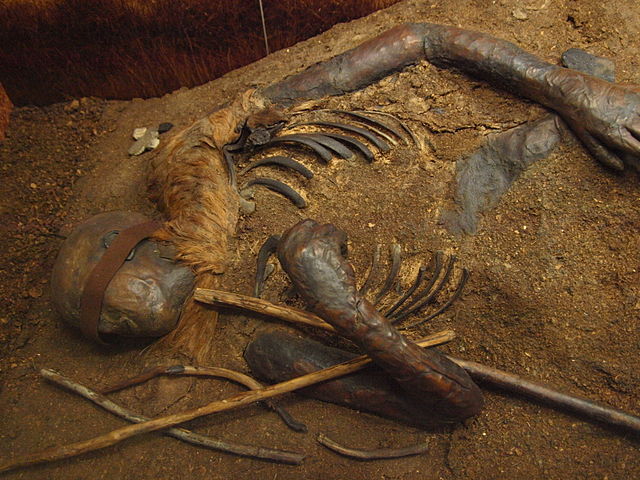Lindow Man, also known as Lindow II and as Pete Marsh, is the preserved bog body of a man discovered in a peat bog at Lindow Moss near Wilmslow in Cheshire, North West England. The remains were found on 1 August 1984 by commercial peat cutters. Lindow Man is not the only bog body to have been found in the moss; Lindow Woman was discovered the year before, and other body parts have also been recovered. The find was described as "one of the most significant archaeological discoveries of the 1980s" and caused a media sensation. It helped invigorate study of British bog bodies, which had previously been neglected.
Lindow Man on display at the British Museum in 2023
The area of Lindow Moss where Lindow Man was discovered
Lindow Man's right foot
Lindow Man's face
A bog body is a human cadaver that has been naturally mummified in a peat bog. Such bodies, sometimes known as bog people, are both geographically and chronologically widespread, having been dated to between 8000 BCE and the Second World War. The unifying factor of the bog bodies is that they have been found in peat and are partially preserved; however, the actual levels of preservation vary widely from perfectly preserved to mere skeletons.
Tollund Man, Denmark, 4th c. BCE
Gallagh Man, Ireland, c. 470–120 BCE
Discoveries such as Röst Girl no longer exist, having been destroyed during the Second World War (photo date: 1926).
Windeby I, the body of a teenage boy, found in Schleswig, Germany








